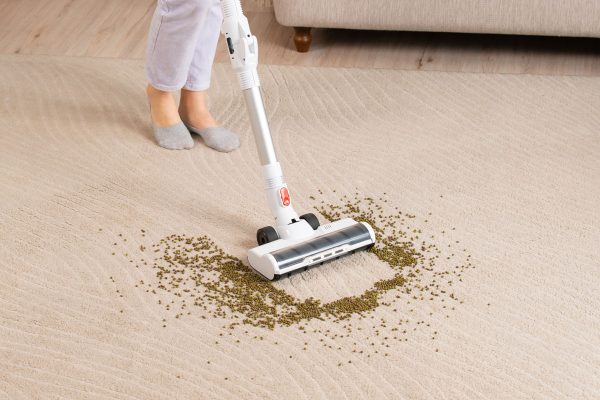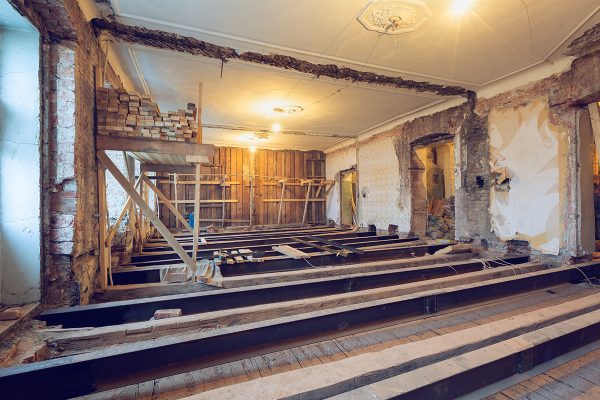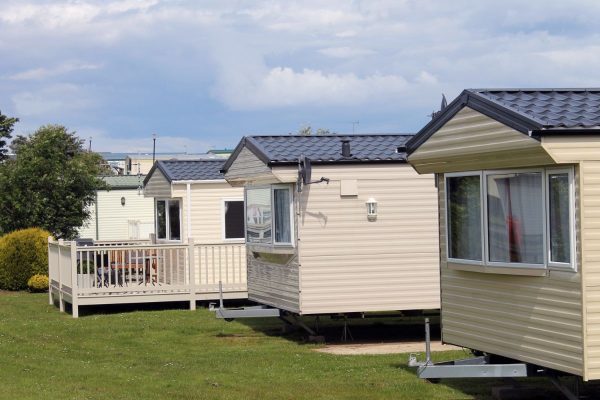As a homeowner, you may be wondering if a concrete floor is necessarily needed for underfloor heating. Fortunately, we have done some research for you, and here is what we found.
No, you don't necessarily need a concrete floor for underfloor heating. Wooden floors and ceramic tiles can also be used. However, concrete floors heat up easily and retain a lot of heat.
Concrete helps boost the warmth of your home. Keep reading to get detailed information on how to install underfloor heating on concrete floors.
Do You Need Concrete Floor For Underfloor Heating?
To give extra warmth to your home, underfloor heating would be a great addition and is one of the best ways of installing underfloor heating beneath a concrete floor. It is less expensive, saves energy, and even operates at low temperatures.
However, underfloor heating can be done on other types of flooring, including stone, wood, laminate, and carpet. It can also be wired or water fed.
There are factors to be considered when using concrete for underfloor heating, such as the perimeter joints below. They play a crucial role when it comes to getting things in order without compromising the heating system, insulation, and the concrete poured atop.
Also, how thick your concrete is can determine the heating distribution and also influence how the underfloor heats up due to its high thermal mass. Therefore, ensure the concrete layer is applied between 2-3 inches (50-75 millimeters) thick.
What Type Of Concrete Is Used For Underfloor Heating?
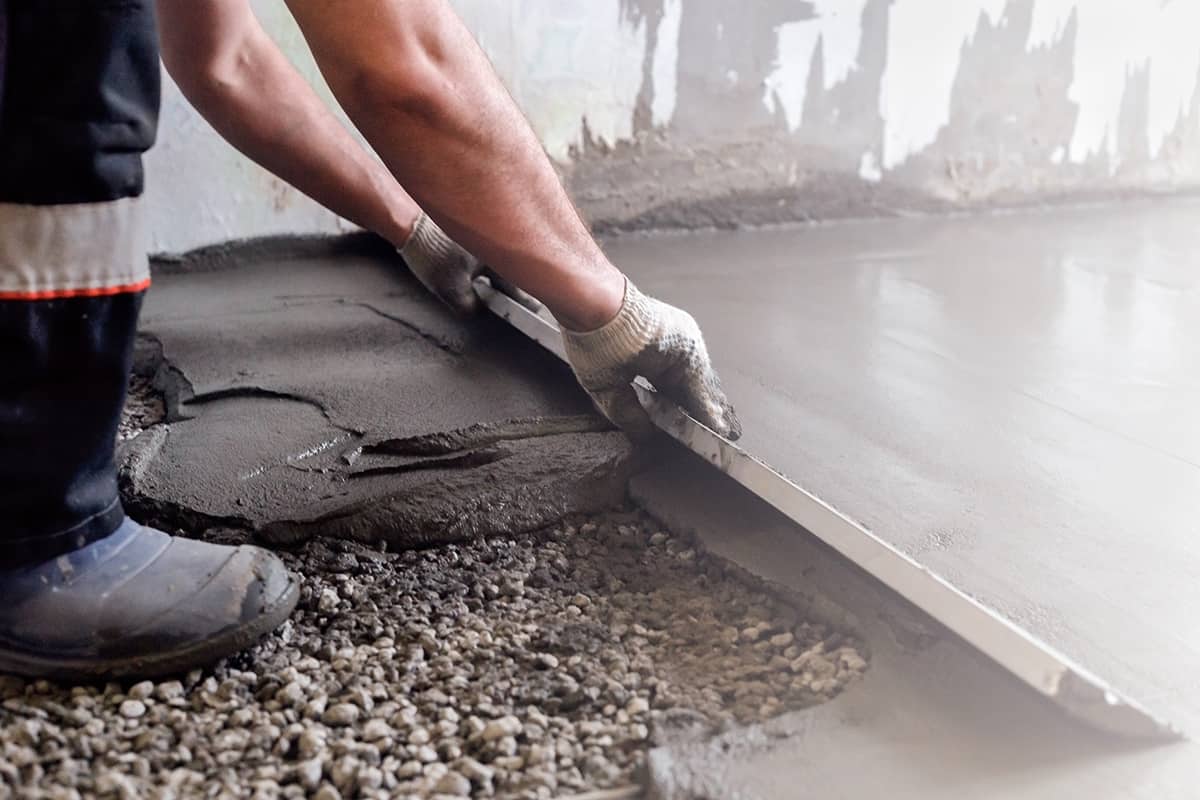
Semi-dry screed is the most widely used concrete for underfloor heating and it is made up of cement and sand. It should have a ratio of 3:1 or 4:1 before water is applied in order to create better flooring.
However, the most appropriate concrete to use is one with C35 newtons in hardness. Although there are two screeds - the other is called liquid screed - but the semi-dry screed is commonly used for underfloor heating projects.
How Thick Can Concrete Floor Be With Underfloor Heating?
The thickness of your underfloor heating depends on the depth of your screed, both semi-dry screed, and liquid screed. The minimum depth for a hand-mixed screed is 2.5 inches (65 millimeters) while the minimum depth for a liquid screed is 2 inches (50 millimeters).
If you want to lay concrete on a domestic property, it is recommended that you stay within the 2.5 inches thickness. This is because any additional depth to the screed will make it difficult for the underfloor heating system to heat up.
How long it takes to heat up will be dependent on the amount of insulation, water temperature, and floor covering resistance. If the 2.5 inch screed depth is maintained, it would take at least one hour to heat up.
However, there are instances that allow thickness above 2.5 inches in order to heat the floor quickly. This is because there are some underfloor heating systems that depend on the screed thermal mass for heat distribution. So, it is always advisable to take a good measurement before the layout is done.
Do You Need Underlay With Underfloor Heating?
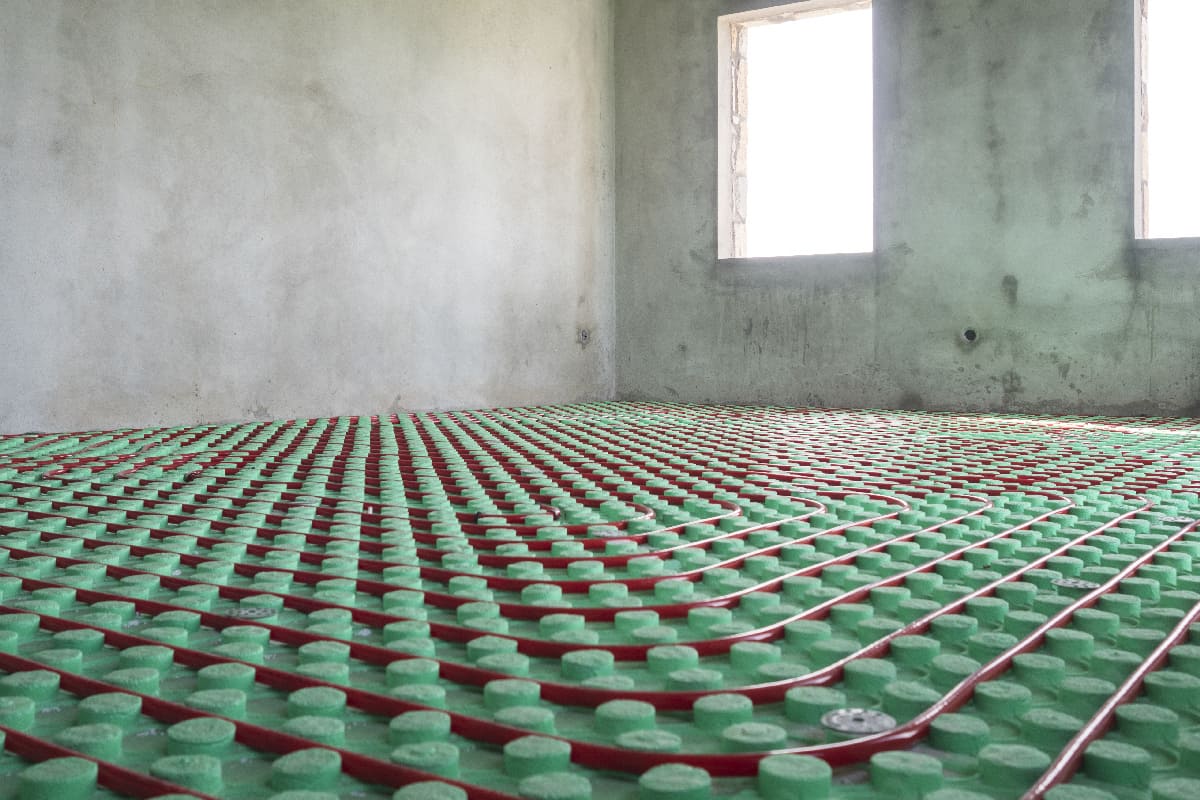
The simple answer is yes. An underlay is recommended for every flooring system, whether it is carpet, tiles, concrete, or laminate. Aside from the comfort it gives, it protects and insulates your desired flooring system.
Underlay is needed in order to ensure that your floor has an increased lifespan, offering endless benefits while still maintaining its excellent condition.
However, an underlay that is designed for underfloor heating does a slightly different task from a standard underlay. With underfloor heating, there is an easy flow of heat on your chosen floor.
What Type Of Underlay Should I Use For Concrete Floor?
There are a wide range of underlays for underfloor heating but for concrete floors, the best type of underlay to make use of is the sponge rubber underlay.
This underlay has the ability to withstand wear and tear and works well with sound reduction. Sponge rubber underlay also gives room for an efficient distribution of heat from the underfloor layers.
How Do I Install Underfloor Heating On Concrete Floor?
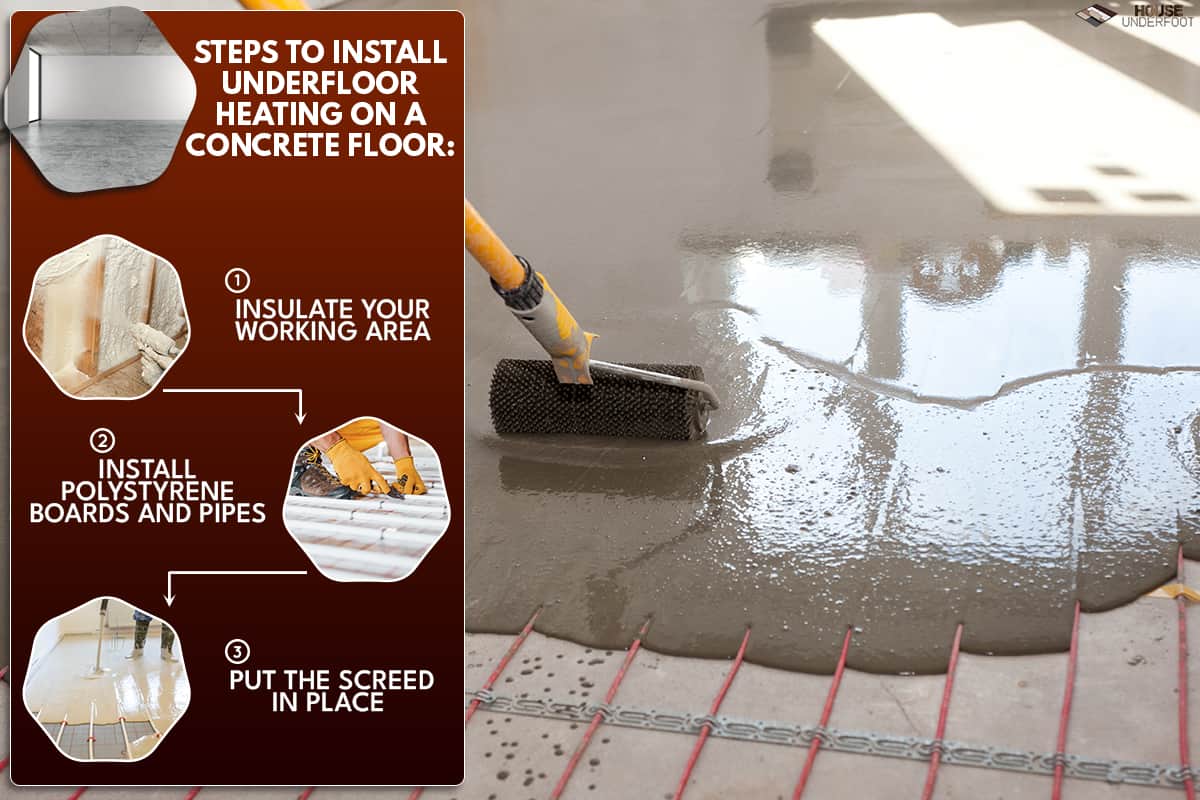
Below is a step-by-step guide to follow if you want to install underfloor heating on concrete floors.
Step 1: Insulate Your Working Area
The first step to installing underfloor heating on a concrete floor is to insulate your home. This task cannot be done without installing insulation. The type of insulation chosen should be based on how much you want to spend and what would be a perfect fit for your house.
Always ensure that your wall and floors are well insulated. With this, if the floor starts producing heat, it won't run out quickly.
Step 2: Install Polystyrene Boards And Pipes
After insulating your home, install what will give enough insulation to your home, which is a polystyrene board. When doing this, it is important to consider their thickness. It is not recommended to run panels on concrete floors without installing insulation. This is to ensure the effective distribution of heat.
Next, run a pipe on the polystyrene board. Ensure the coils that you want to run on the underfloor heating are arranged close to each other. Doing this will help you achieve a balanced heat and also prevent cold spots.
Step 3: Put The Screed In Place
After the pipe has been laid, you can now place the screed over it. This is to protect the pipes from getting damaged as a result of ups and downs in the room.
Underfloor heating has different floors' finishes, so the kind of flooring finish you want will depend on your budget. You can also add tiles or even carpet to finish your flooring.
How Long Does Underfloor Heating Last?
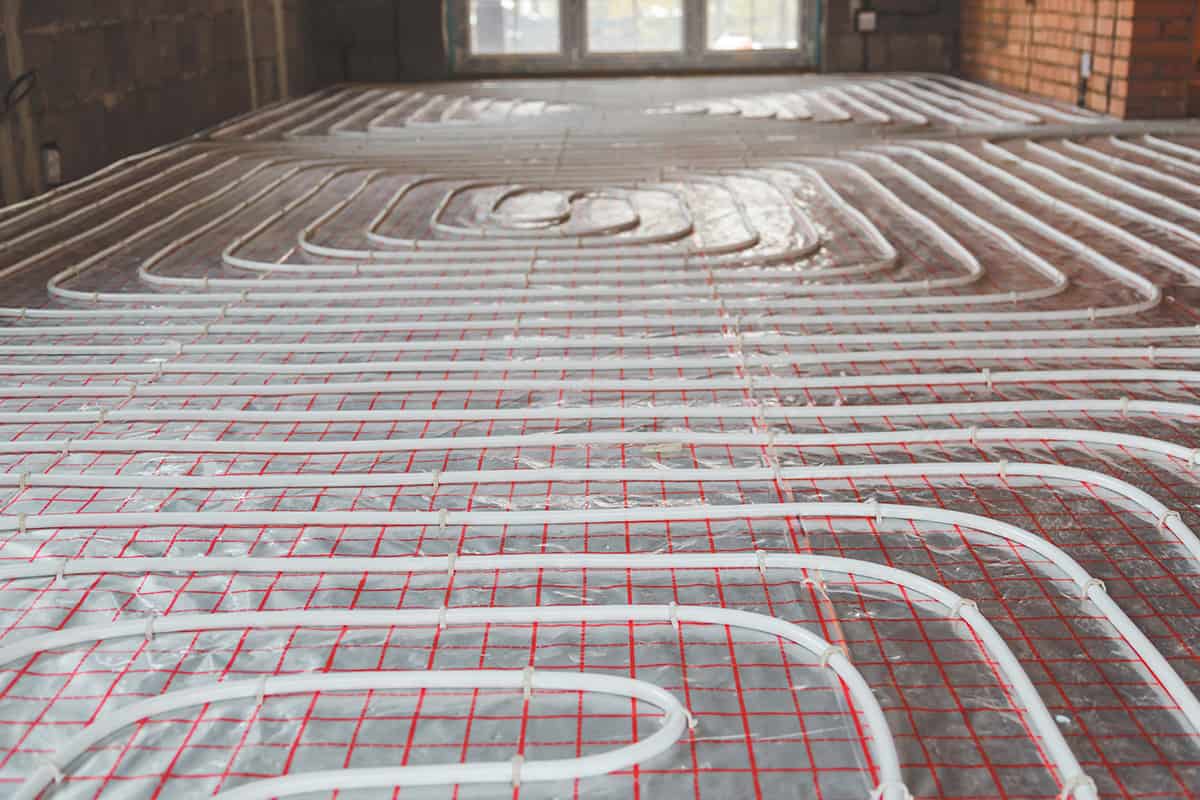
As long as the excellent condition of the flooring is maintained, the underfloor heating can last for years depending on the type of heating system. For electric underfloor heating, it can last for over 25 years as long as the flooring is maintained.
A gas boiler system can last for at least 10 years because it has different components that do not last long and may need to be replaced over time. A water-based system is still the longest-serving heating system as it is specifically designed to last for 50 years.
When you want to purchase a heating system, it is recommended that you get it from a reputable company and ensure it comes with an extended warranty. This is to cover the components in case it needs to be replaced, especially when you make use of a gas boiler.
Can I Install Underfloor Heating On An Old Concrete Floor?
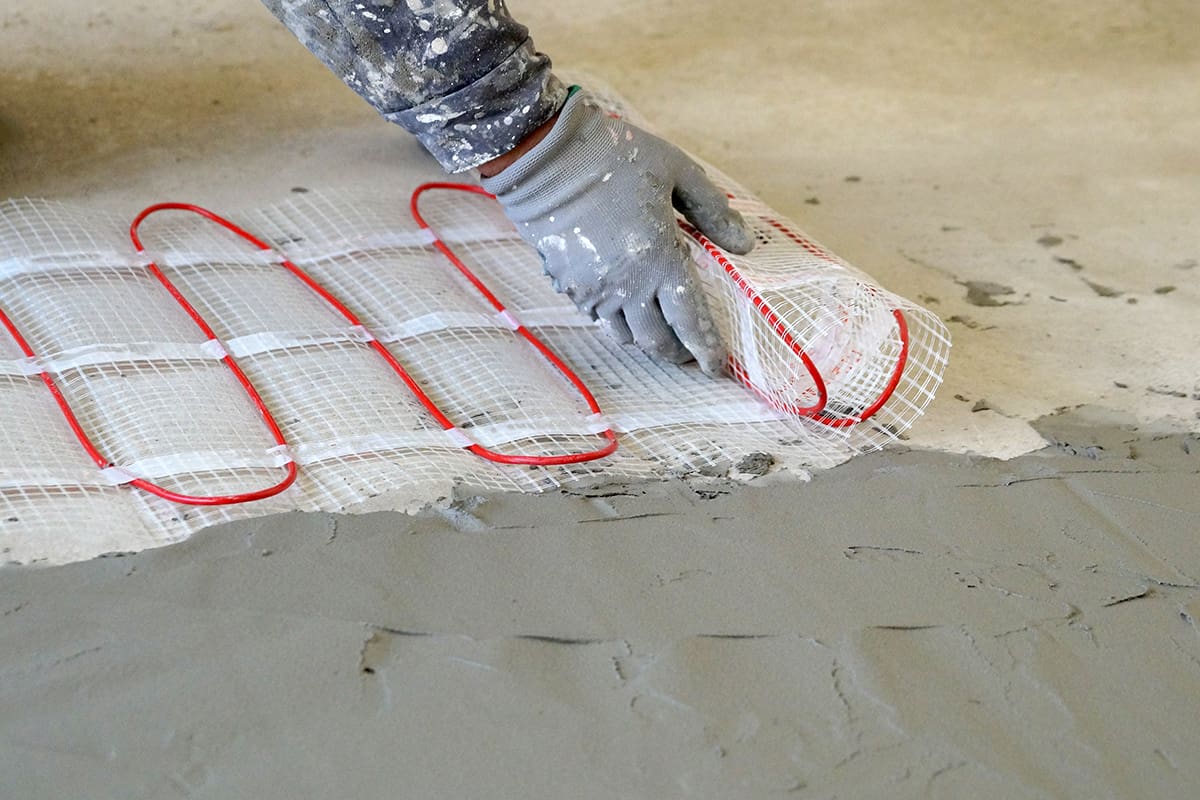
Yes, underfloor heating can be installed on an old concrete surface. If your concrete is polished, it is possible to install insulation together with the heater. After this, you can cover the area with a compound before polishing the concrete.
It is recommended to look for alternative ways of working with the existing concrete floor before destroying it. If not, you may end up spending a lot of money.
Can You Have Underfloor Heating In Just One Room?
Yes, underfloor heating can be installed in just one room of your house. In fact, some methods are more suited for one room. Since underfloor heating systems make use of less energy, imagine how much will be saved on energy bills if you install it in your home.
To Wrap Up
Underfloor heating is a big addition to your home because of the benefits it offers. You can use other types of floor for underfloor heating but it is better to go with concrete. Installing underfloor heating on a concrete floor may seem difficult but the task can be done without the help of a professional.
If you enjoyed reading this post, here are similar articles you may like:
Can Laminate Underlay Be Used For Carpet?

